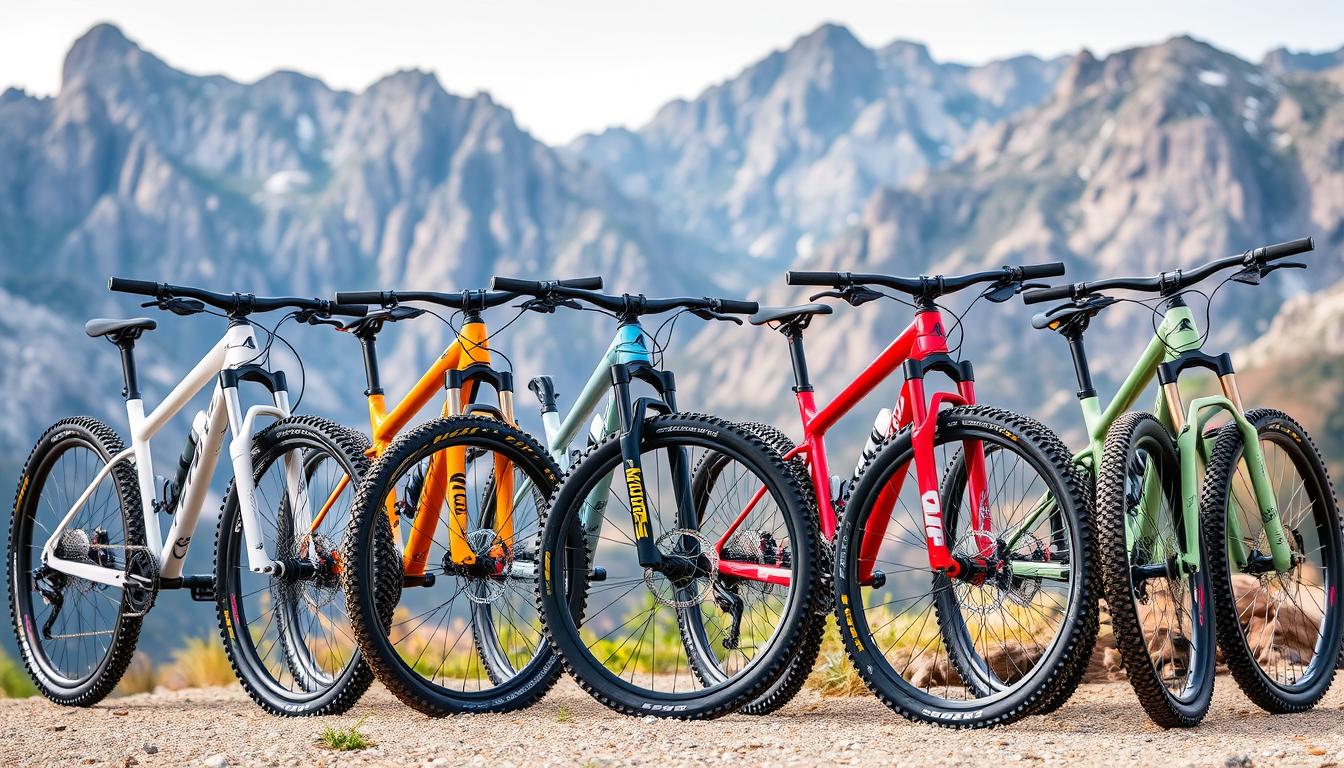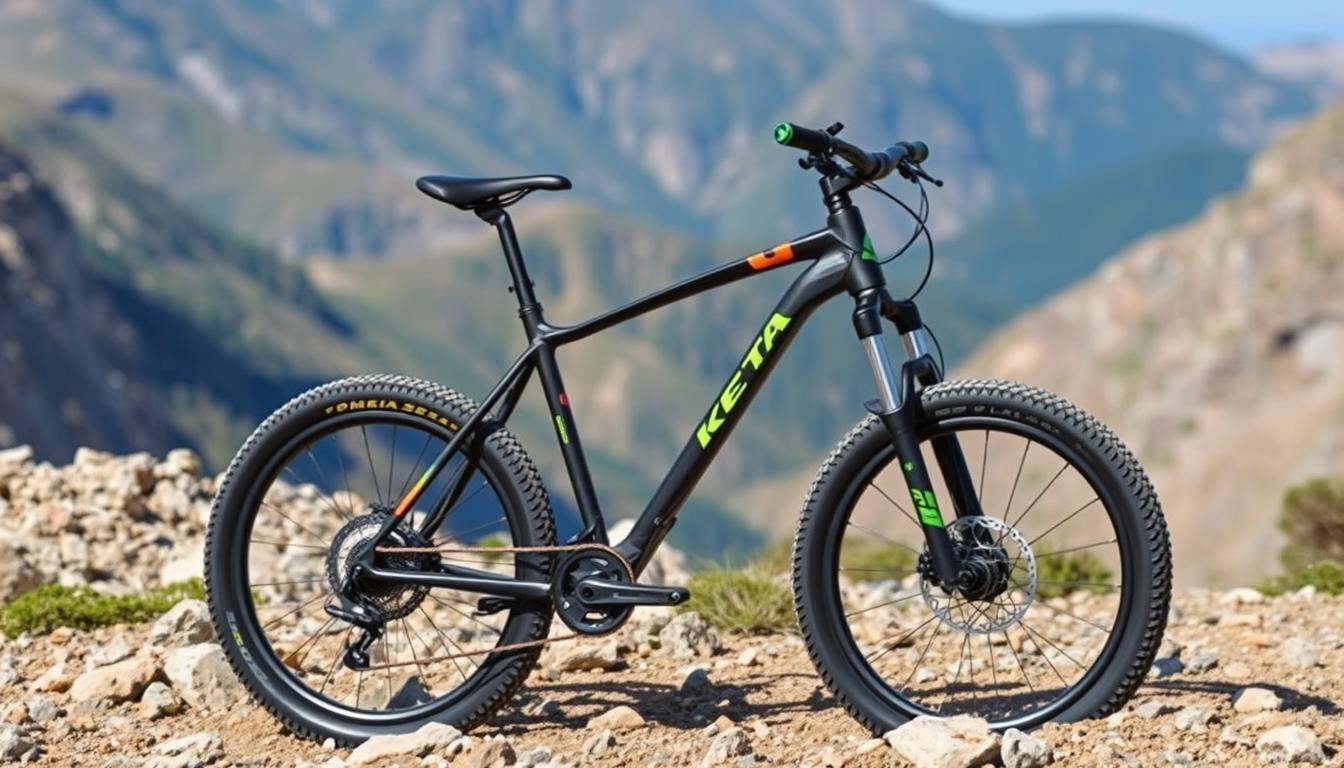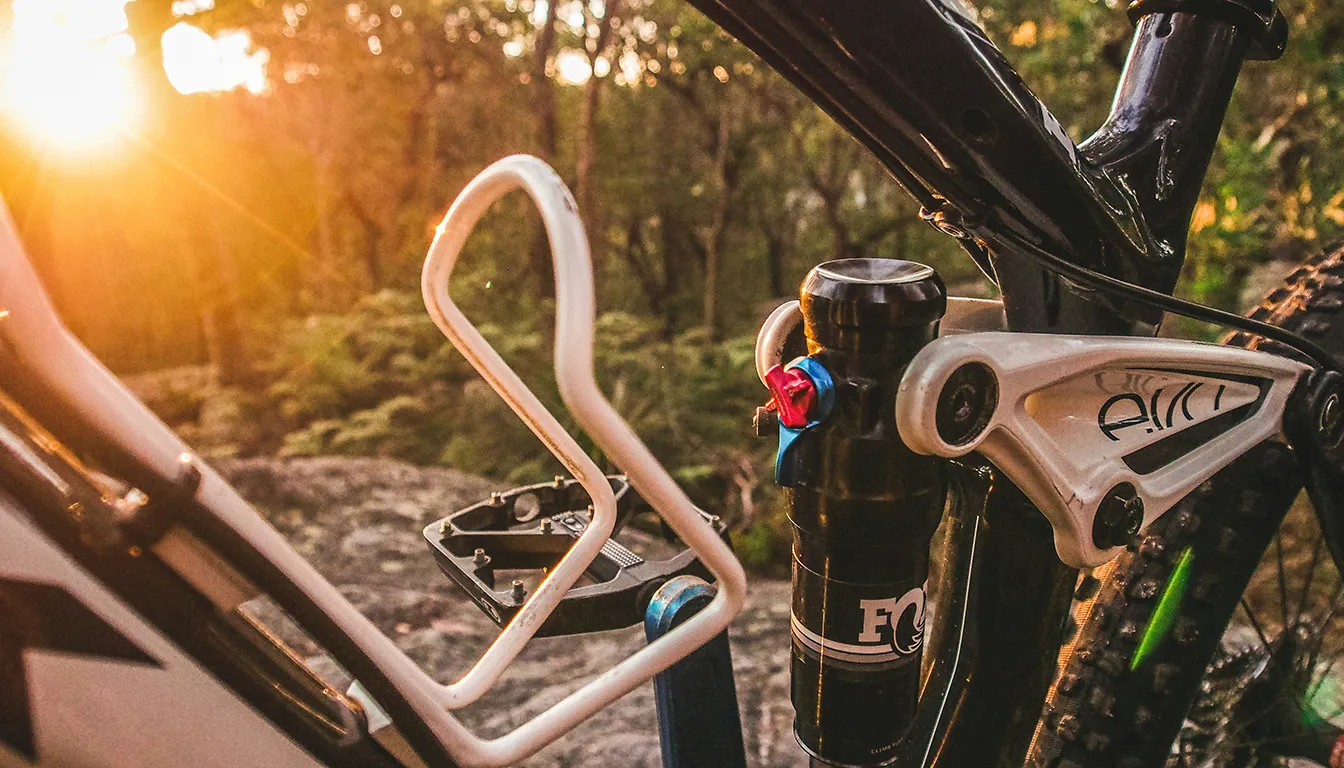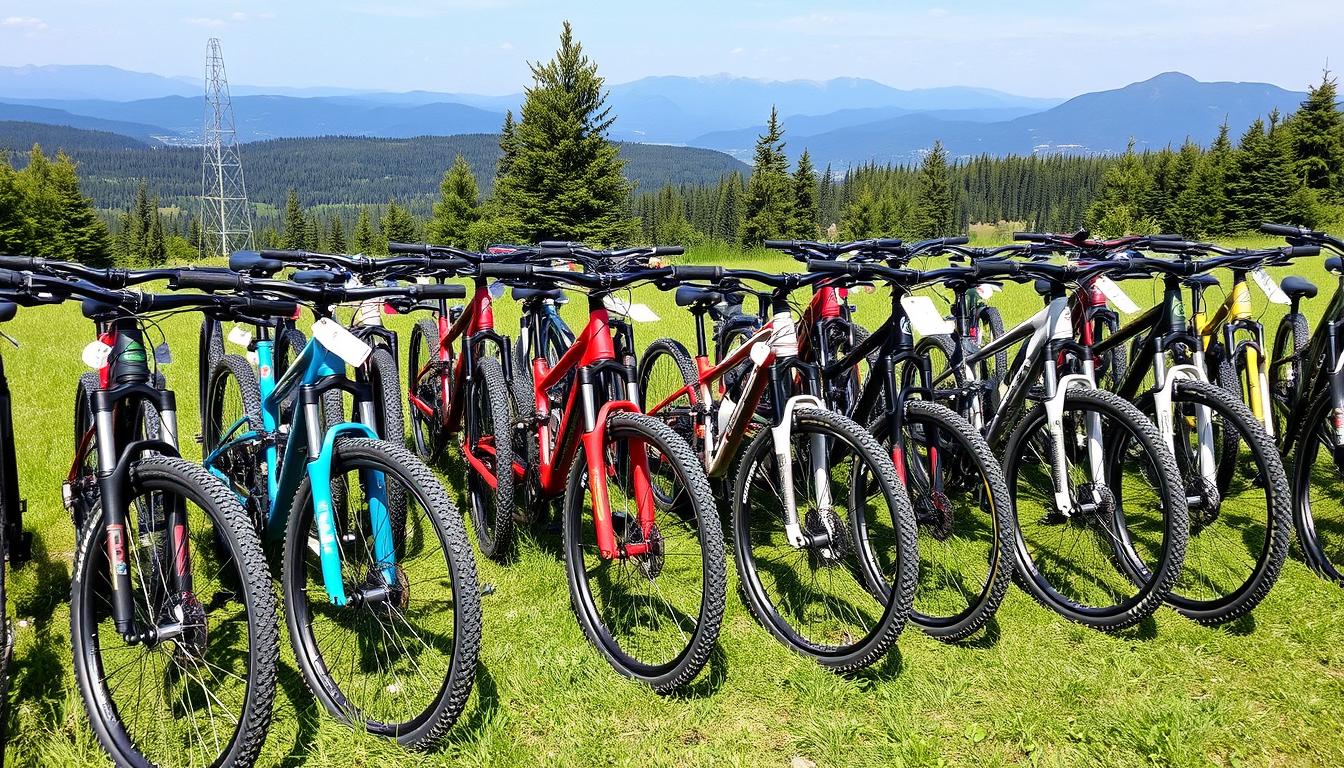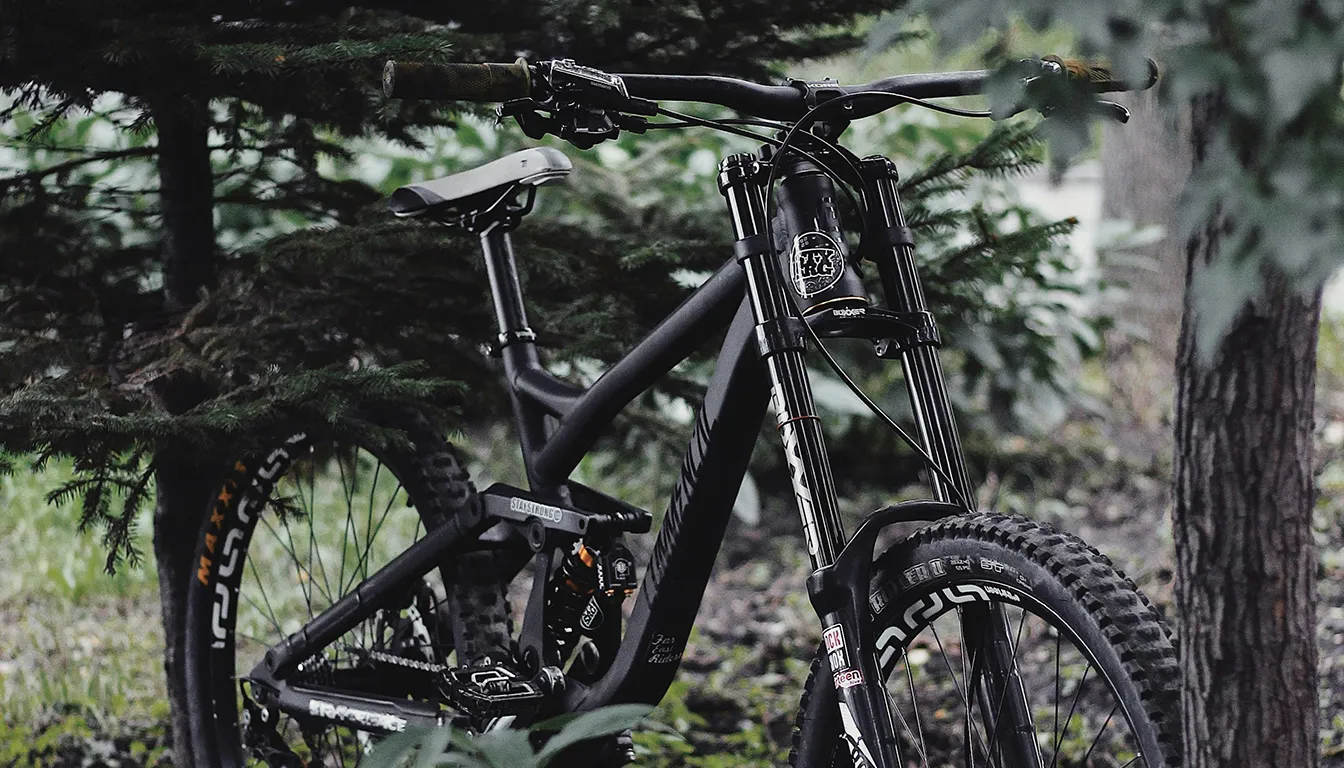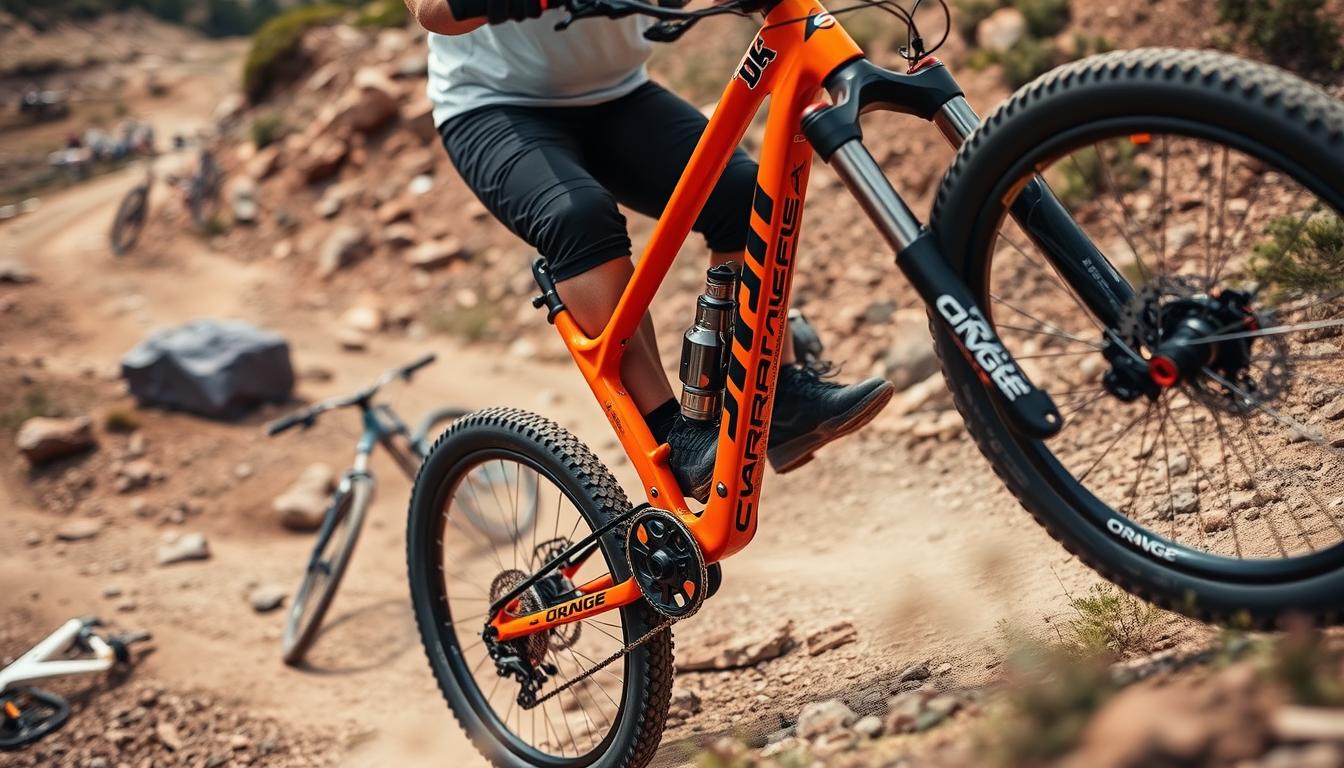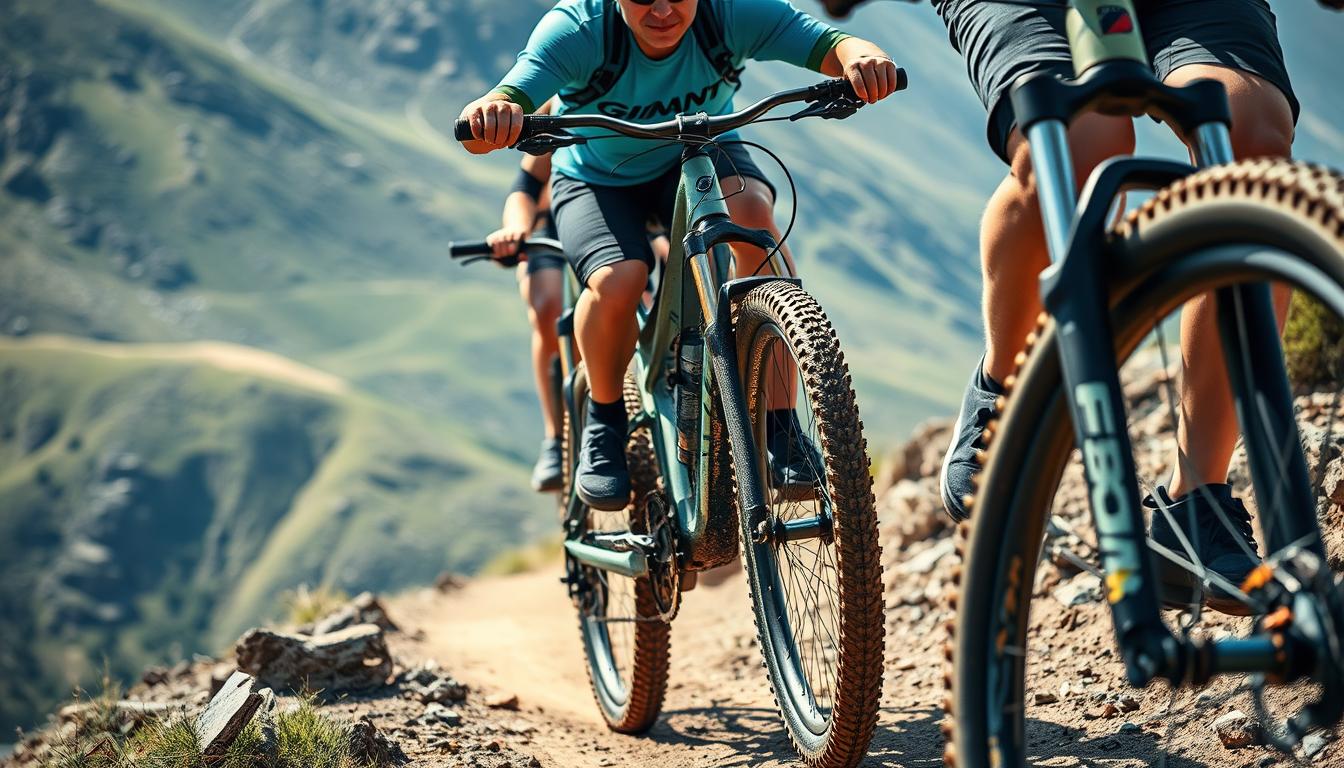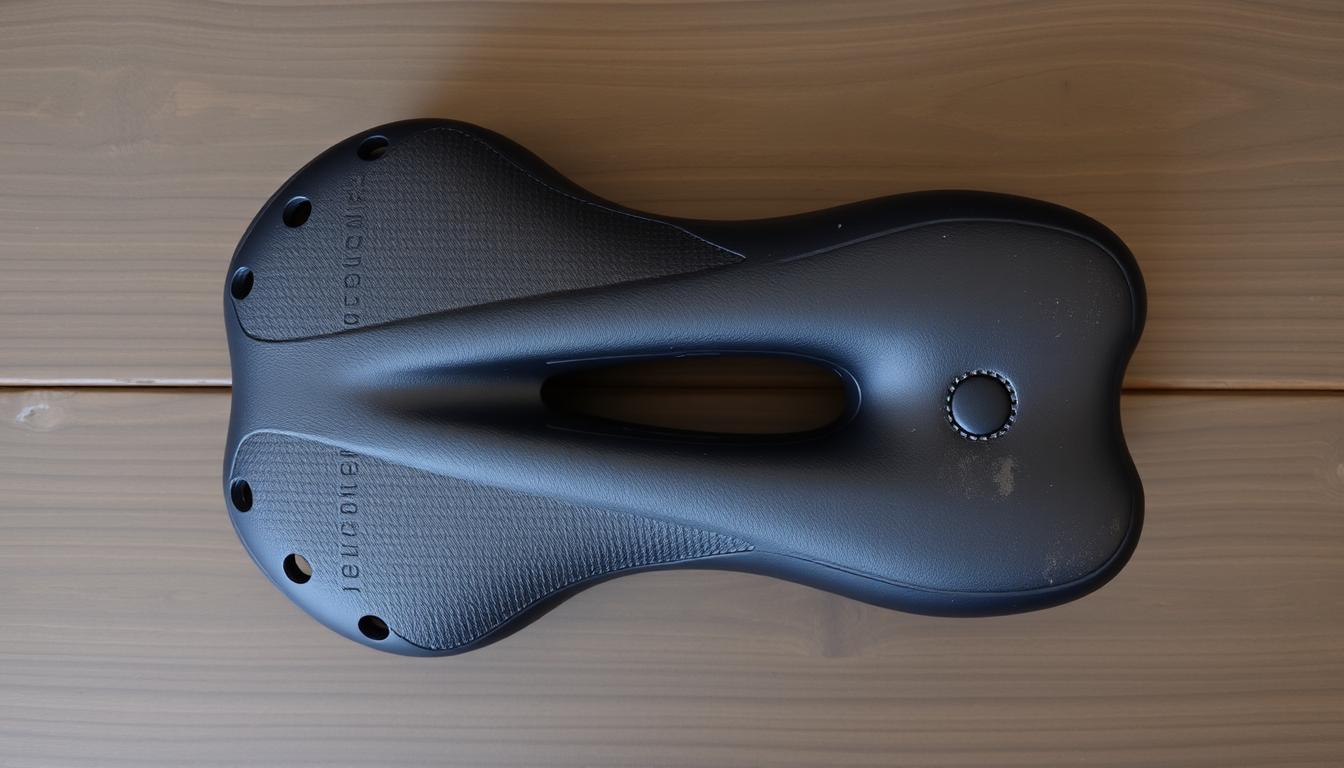Choosing the right mountain bike is key to a great and safe riding experience. Mountain biking has changed a lot since the 1980s. We now have four main types: Cross-Country, Trail, All Mountain (Enduro), and Downhill. Whether it’s 29-inch wheels for XC bikes or various suspension travels, there’s a perfect bike for every rider.
To pick the best mountain bike, consider your usual trails and what you aim to achieve. Downhill bikes are made for steep slopes and have strong suspension. On the other hand, XC bikes are lighter and better for smooth paths. Also, the advanced tech in bike design and materials like carbon fibre makes choosing tougher.
In the end, matching your bike to your riding style, terrain, and preferences is crucial. With the right specs, you can select a mountain bike that enhances your trail adventures.
Understanding Different Mountain Bike Styles
Mountain biking has various styles for different terrains and preferences. By knowing these styles, your trail rides can get much better. There are Enduro bikes, Cross-Country bikes, and Trail bikes, each made for specific kinds of adventures.
Enduro Bikes
Enduro bikes are built for tough riding, good at going down and up hills. They have 150-170mm of suspension travel, which helps on rough descents and efficient climbs. Brands like Santa Cruz and Specialized offer durable bikes for challenging paths.
Cross-Country Bikes
Cross-Country bikes are all about speed, with 80-120mm suspension travel. They’re great on smooth lands and for enduring long rides. Competitors often choose brands like Cannondale and Giant for their light but efficient bikes.
Trail Bikes
Trail bikes strike a great balance for climbing and going downhill. They come with 120-150mm suspension, fitting for different trail conditions. Whether climbing steep hills or descending rocky slopes, bikes from Trek and Yeti are up to the challenge. For the top trail bikes of 2024, see this guide.
Key Factors to Consider When Choosing Mountain Bikes
When picking mountain bikes, a few key factors are vital for a great ride. These factors help in picking a bike that suits the trails you aim to conquer. Let’s explore terrain compatibility, riding goals, and personal likes to help you choose wisely.
Terrain Compatibility
Checking if a bike fits the terrain you’ll ride on is key. Think about the trails you love – are they full of rocks, mainly smooth, or somewhere in between? Enduro riding bikes do well on rough, steep trails. In contrast, cross-country bikes are great for easier climbs and smoother paths. Knowing this helps you find the perfect bike.
Riding Goals
Your goals affect which bike fits you best. Are you racing, enjoying casual rides, or doing tricks? Each style of mountain bike serves a different purpose. Figuring out your goal helps in choosing a bike that meets your needs.
Personal Preferences
What you like is very important in choosing a bike. Some prefer the lightness of a hardtail, while others go for full-suspension bikes for better control on tough terrains. It’s smart to try various bikes to see which feels right. Also, checking out specific component details and beginner recommendations can really help.
Geometry, Specs, and Sizing of Mountain Bikes
Understanding mountain bike geometry, sizing, and specs is key for top performance and comfort. These factors greatly affect a bike’s handling on different terrains. Knowing about mountain bike geometry helps in choosing the right bike for your needs.
Bike Geometry
The mountain bike geometry refers to the bike frame’s shapes and angles, impacting terrain handling. Different riding styles need specific geometries. For example, downhill riders might prefer a slacker head angle for stability, while cross-country riders may choose a steeper angle for agility. Grasping these details helps riders pick a bike that suits their style, improving their riding experience.
Sizing Essentials
Getting the right bike size ensures comfort and control. Remember, size guides can vary across brands. Typically, the size chart looks like this:
- XS: 145-155 cm (4’9”-5’1”)
- S: 157-165 cm (5’2”-5’5”)
- M: 167-178 cm (5’6”-5’10”)
- L: 170-185 cm (5’11”-6’1”)
- XL: 187-193 cm (6’2”-6’4”)
- XXL: 194 cm+ (6’4”+)
Select the frame size based on your height and body shape. Also, wheel size matters; 26-inch wheels might suit shorter riders, but taller riders over 5’7” may prefer 29-inch wheels.
Training in Bike Specs
Understanding mountain bike specifications is crucial for informed choices. Suspension travel, reach, and wheelbase are key factors affecting a bike’s performance. A bike with a longer reach, for example, could be more stable at high speeds but might be trickier to handle on tight turns. It’s smart to look at guides and specific brand recommendations to find a bike that matches your riding goals.
Testing and Demoing Mountain Bikes
Trying out mountain bikes is key when looking to buy. Test rides help you figure out if a bike suits your needs. This step is critical in choosing the right bike.
The Importance of Test Rides
It’s very important to ride a bike before buying it. During test rides, you can check if the bike is comfortable and performs well. Bike shops and events let you try out different bikes. This is essential for finding the perfect bike.
Comparing Models
After test rides, comparing bikes is useful. Consider their performance, features, and prices. This helps you understand what’s available and choose wisely. Brands like Yeti Cycles, Trek, and Santa Cruz offer demo events to try various bikes.
Whether you go to a shop or a festival like the Fruita Fat Tire Festival, there are chances to try bikes for free. These events make choosing a bike easier and more fun. They help riders find their perfect mountain bike.
Conclusion
Choosing the right mountain bike for your style is key to enjoying the trails. If you love fast downhills or calm, scenic rides, picking the right bike is crucial. It should match your likes and the challenges you’ll face. The right bike makes the ride better and helps keep you fit and happy.
To pick the best bike, explore different styles and test many models. It’s important to consider what matters most in your choice. Knowing how bikes handle different terrains helps you pick the perfect one. The right choice leads to a fun and fulfilling adventure on the trails.
Buying a great mountain bike means starting amazing adventures. With the best bike for you, the trails become an exciting playground. So, get ready, head out, and enjoy the excitement of mountain biking!
FAQ
What factors should I consider when choosing mountain bikes?
When choosing a mountain bike, think about the terrain, your cycling goals, and what you like. Your choice affects how well you’ll ride and enjoy your bike’s abilities.
What are the differences between Enduro, Cross-Country, and Trail bikes?
Enduro bikes are great for rough rides and going downhill fast. Cross-Country bikes are fast and light, best for smoother paths. Trail bikes can do a bit of everything, good for going up and coming down.
Why is bike geometry important when selecting a mountain bike?
The shape of your bike changes how it rides. It’s key to pick a shape that matches how you ride. This means a better fit and a better ride.
How can I ensure I have the right size mountain bike?
To get the right bike size, look at brand size guides, think about your height and shape, and try out a few bikes. Finding the right fit means more comfort and control.
Is testing a mountain bike really necessary before purchasing?
Indeed, taking a bike out for a test ride is key. It lets you feel if the bike is comfy and how it handles. Bike shops often let you try before you buy to help you choose wisely.
What should I look for when comparing different mountain bike models?
Look at how each bike performs, what features they have, how much they cost, and if they match your riding style. This will help pick the best bike for you.
